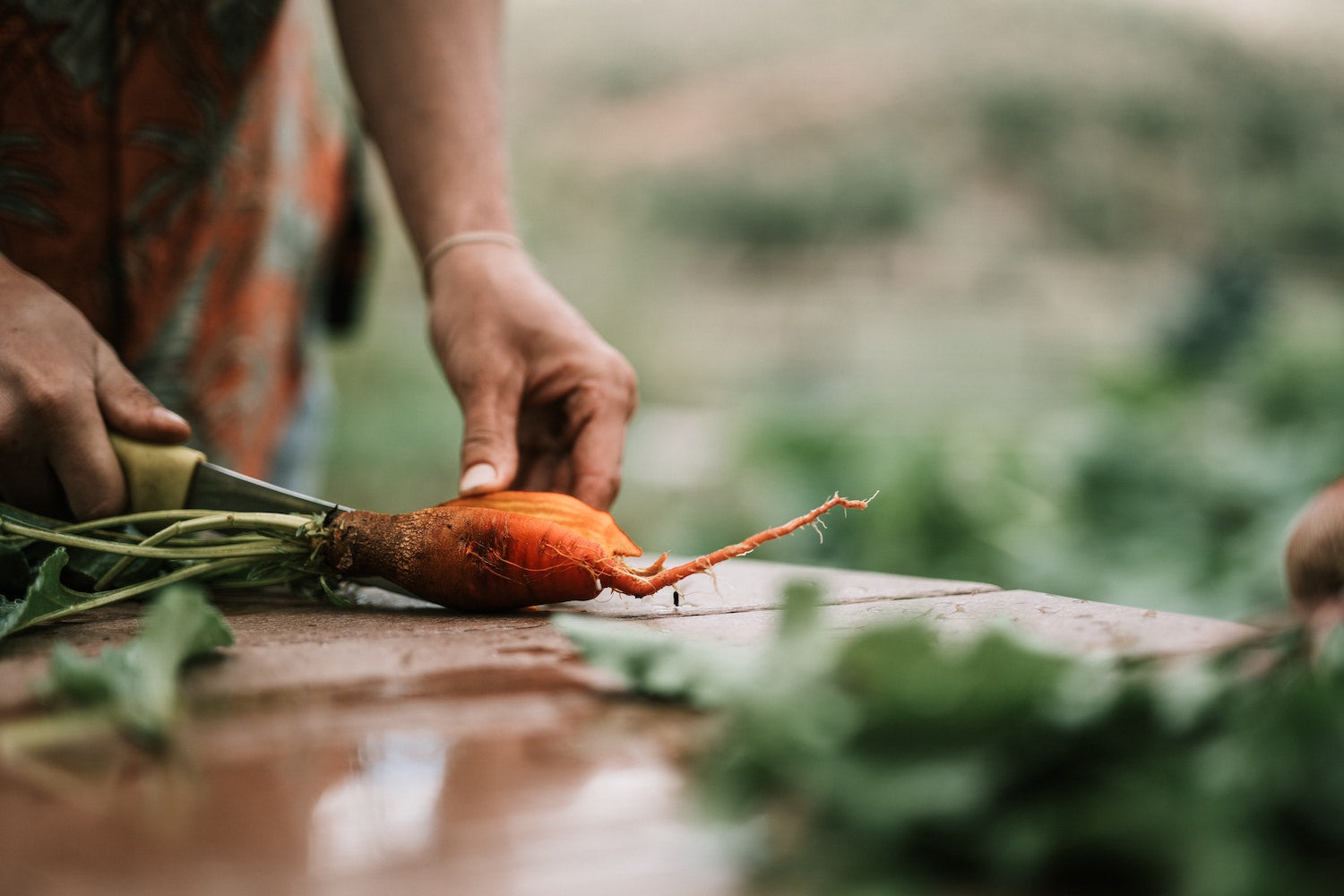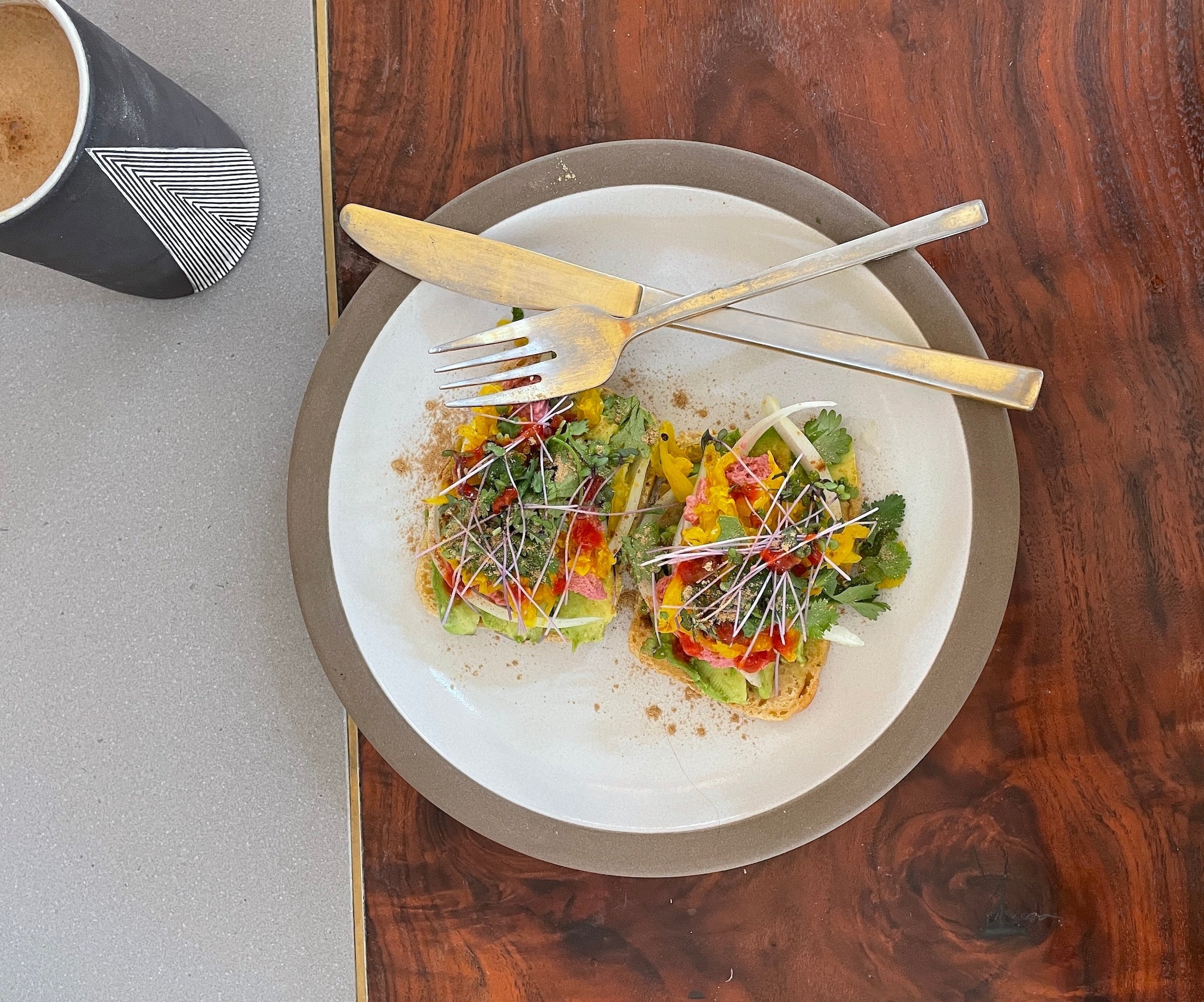
Vata Balancing Foods List
When vata dosha is in excess in the body and/or mind, Ayurvedic medicine emphasizes eating the right foods accompanied by the appropriate spices to regain alignment. Below, we have assembled a vata balancing foods list to be available as your guide when you are focusing on restoring harmony to vata dosha. To learn more about your dosha and if vata may be out of balance, take our Discover Your Dosha Quiz. Additionally, we encourage you to take your wellness journey to the next level by downloading our Introduction to Ayurveda Class or booking an Ayurvedic consultation with our Clinical Ayurvedic Specialist, Laurel Odom.
Oils
Most oils are beneficial for vata dosha, but oils do contain a variety of properties with some being cooling and light while others are warming and heavy. Vata dosha typically benefits from warm, heavy oils but can also be supported by heavy and cooling oils like ghee and coconut oil.
Best Oils for Vata:
- Sesame
- Avocado
- Ghee
- Almond
- Mustard
- Coconut
- Sunflower
Spices
Spices are essential for optimal digestion as they help to kindle agni (digestive fire) and prepare the gastrointestinal tract for the intake, absorption and assimilation of food. Thus, spices should be enjoyed as a digestive churna and also incorporated into snacks and meals. For a simple way to incorporate vata balancing spices, try our Vata Spice Blend! It is an excellent cooking companion and is designed by Ayurvedic herbalists to keep vata dosha healthy and happy. Please note that while most spices support vata dosha; we recommend using hot spices like cayenne and chili sparingly or just avoiding them altogether when working to balance vata.
Best Spices for Vata
- Turmeric
- Ginger
- Cumin
- Cinnamon
- Nutmeg
- Clove
- Vanilla
- Allspice
- Asafoetida
- Paprika
- Black pepper
- Pippali
- Rosemary
- Tarragon
- Oregano
- Thyme
- Marjoram
- Salt
- Saffron
- Mustard seeds
- Fennel
- Cardamom
Vegetables
When selecting vata pacifying vegetables, favor ones that have sweet, moist, warm and grounding properties like root vegetables and squashes. Avoid veggies that possess dry, rough and cold qualities like raw salads and greens, corn, radishes and cruciferous vegetables. Cooked vegetables are best for balancing vata dosha while raw, cold vegetables are imbalancing. This being said, if you are going to eat raw vegetables, we highly recommend eating them at noon when your agni (digestive fire) is at its peak. Also, be sure to mix the raw vegetables in an oily dressing in order to pacify their dry, rough and cold nature.
Best Veggies for Vata:
- Sweet potatoes
- Carrots
- Beets
- Yams
- Butternut squash
- Acorn Squash
- Spaghetti Squash
- Pumpkin
- Zucchini
- Yellow Squash
- Rutabaga
- Okra
- Peas
- Asparagus
- Avocado
- Okra
- Caramelized onions
- Chilies (in small quantities)
- Mustard Greens
Grains
Ayurveda explains that grains can provide a source of strength and stamina for the body and mind which makes this food category an excellent healing companion for vata imbalances. Grains that are smooth, grounding, sweet and easily digestible are best for vata dosha while grains like rye, corn, granola, buckwheat, barley, toast and dry cereals should be avoided as they increase the dry, rough and light qualities that can push vata out of balance.
Best Grains for Vata:
- Rice
- Rice pudding
- Oatmeal
- Pancakes
- Amaranth
- Durham flour
- Seitan
- Quinoa
- Wheat

Beans & Legumes
Beans and legumes have an astringent quality which can increase dryness and lightness in the body. They are also difficult to digest, commonly causing gas and bloating for people predominant in vata dosha or people that are experiencing a vata imbalance. This being said, if you would still like to incorporatie beans and legumes into your diet, it is important to cook them with vata balancing spices and oils to help aid in optimal digestion. The best beans for vata dosha according to Ayurveda are mung beans. The Ayurvedic healing dish, kitchari, is made with this bean as they are considered tridoshic or balancing to all doshas thanks to their ability to nourish and gently cleanse the body.
Best Beans & Legumes for Vata:
- Mung beans
- Red lentils
- Split black lentils / black gram (urad dahl)
- Split pigeon peas (toor dahl)
- Soy
- Tofu
Meat & Eggs
In Ayurvedic medicine, meat is solely recommended for healing purposes or when there are no other food options available. Meat may be consumed when someone is severely depleted, weak and/or convalescing. When experiencing a vata imbalance, the above symptoms can manifest, often making meat indicated due to its ability to help reduce vata dosha and restore health and harmony to the body and mind. The best meats for pacifying vata are warming, sweet, heavy and moist. Please note that eggs are considered tridoshic in nature, balancing to all 3 doshas.
Best Meats & Eggs for Vata:
- Goat
- Beef
- Dark meats of birds
- Buffalo
- Freshwater fish
- Saltwater fish
- Sardines
- Anchovies
- Shrimp
- Shellfish
- Eggs
Dairy & Nut Milks
Dairy tends to have sweet, heavy and sattvic (harmonious) qualities, making dairy beneficial for people predominant in vata or experiencing an imbalance in this dosha. Consuming dairy that is fresh, unprocessed and warm is best for the intake of prana and for supporting easeful digestion. Since hard cheeses need to be aged for 6 months or more, Ayurveda does not consider hard cheeses like parmesan or sharp cheddar to have much prana. Additionally, hard cheeses clog the nadis, the channels in which prana flows in the subtle body; thus, Ayurveda does not recommend hard cheeses. In contrast, soft cheeses are considered fresh and sattvic (harmonious) in Ayurvedic nutrition. Dairy is best enjoyed warm because cold dairy products like ice cream or a chilled glass of milk can reduce or completely put out one’s agni. It is best to consume dairy at least one hour away from meals, warmed and with spices to support optimal digestion. To learn how to prepare an evening milk tonic to support vata dosha, please visit our blog, “Ayurvedic Milk Recipes for Restful Sleep”.
Best Dairy & Plant Milk for Vata:
- Raw cow’s milk
- Goat’s milk
- Ghee
- Butter
- Buttermilk
- Ricotta
- Goat cheese
- Clotted cream
- Cottage cheese
- Cream cheese
- Yogurt
- Sour cream (in small quantities)
- Oat Milk
- Almond Milk
Nuts & Seeds
Nuts not only provide a great source of protein, but they also contain a wealth of healthy fats that nourish and strengthen the light and dry qualities of vata dosha. However, renowned Ayurvedic physician, Dr. Vasant Lad recommends that all doshas consume nuts in small quantities, as they can be difficult to digest. As for seeds, most are light and dry, making them not as beneficial for restoring vata dosha when compared to nuts, but for all you seed lovers out there, there are even a few select seeds that work wonderfully to balance vata.
Best Nuts & Seeds for Vata:
- Almonds
- Walnuts
- Brazil nuts
- Pistachios
- Cashews
- Macadamia Nuts
- Hazelnuts
- Pecans
- Pine nuts
- Chia seeds
- Pumpkin seeds
- Sesame seeds
- Flax seeds
Fruits
In Ayurvedic medicine, fruits are considered to be purifying due to their light and etheric nature; therefore, fruits are not the most nourishing food category for vata dosha. Despite this fact, many fruits contain a lot of moisture and some are pungent and warming, and these characteristics are beneficial for pacifying vata. The general rule of thumb for vata balancing fruits is to favor sweet, moist and/or pungent fruits and to always balance the intake of fruits with heavier, fortifying foods in your diet like grains and root vegetables.
In accordance with proper Ayurvedic food combining, always consume fruits away from meals, enjoying them separately as a snack. Another tip for enjoying fruits when working to balance vata dosha is to stew or cook fruits to make them sweeter and more easily digestible. Also, soaking dried fruits like raisins, prunes and dates will rehydrate them and make them more supportive to vata.
Best Fruits for Vata:
- Stewed or baked apples
- Ripe bananas
- Apricots
- Peaches
- Strawberries
- Blueberries
- Coconut
- Cherries
- Melons
- Lemons
- Limes
- Grapefruit
- Oranges
- Mandarins
- Clementines
- Tangerines
- Mango
- Papaya
- Tamarind
- Rhubarb
- Grapes
- Dates (fresh, cooked or soaked)
- Figs (fresh, cooked or soaked)
- Prunes (cooked or soaked)
- Raisins (cooked or soaked)

Sugars / Sweeteners
As you might have guessed, sugars contain the sweet taste; hence, vata can benefit from unprocessed sugars in their most natural form. This means that refined white sugar is not supportive to vata dosha nor any of the other doshas. Instead of adding refined sugar to your baking and/or beverages, we suggest opting for natural sweeteners that still have the sweet taste but also contain warming and moist energies, making them pacifying to vata dosha.
Best Sugars / Sweeteners for Vata:
- Jaggery
- Molasses
- Sucanat
- Barley malt
- Date sugar
- Turbinado sugar
- Honey (fresh and raw)
- Maple syrup (in small quantities)
We hope that you enjoy incorporating these vata friendly foods into your meals! Please keep in mind that this list is merely a starting off point to begin with, but that ultimately it is most important to listen to your body and your gut to see what is best for you. Pay attention to any digestive disturbances that you may experience when eating certain foods. Keeping a food journal can be a great way to assess what does and does not work for you and your digestive system. Also, if you are not currently working to balance a particular dosha, then it is recommended to eat in alignment with the seasons. To learn more about how you can support optimal health with your meals, read our blog post “15 Ayurvedic Guidelines for Healthy Eating”. Bon Appétit!
Hero Photo by Taryn Elliott from Pexels
Granola Photo by Daria Shevtsova from Pexels
Fruit Photo by Karolina Grabowska from Pexels





1 comment
Super thanks for your advices
Colette
Leave a comment
This site is protected by hCaptcha and the hCaptcha Privacy Policy and Terms of Service apply.